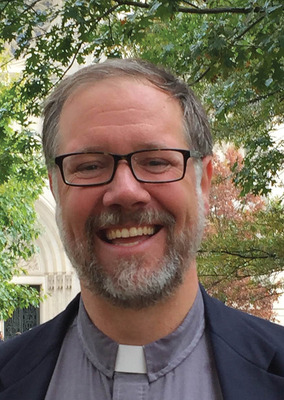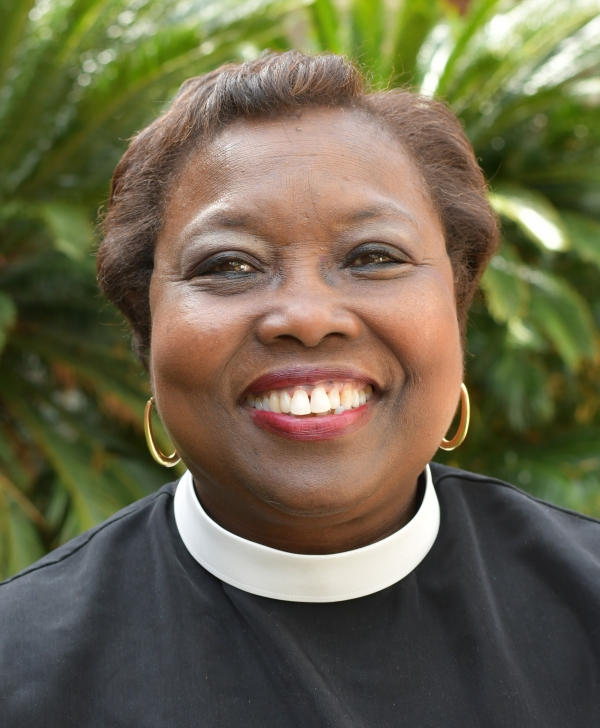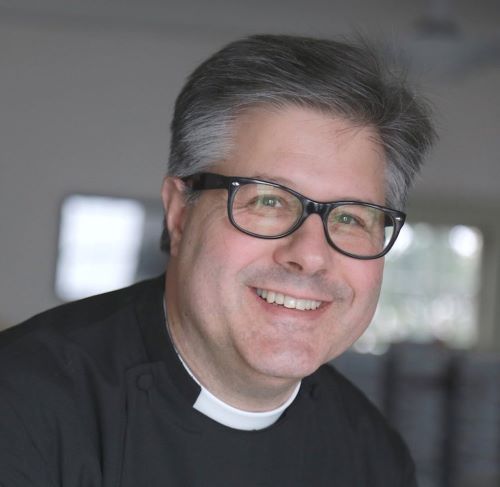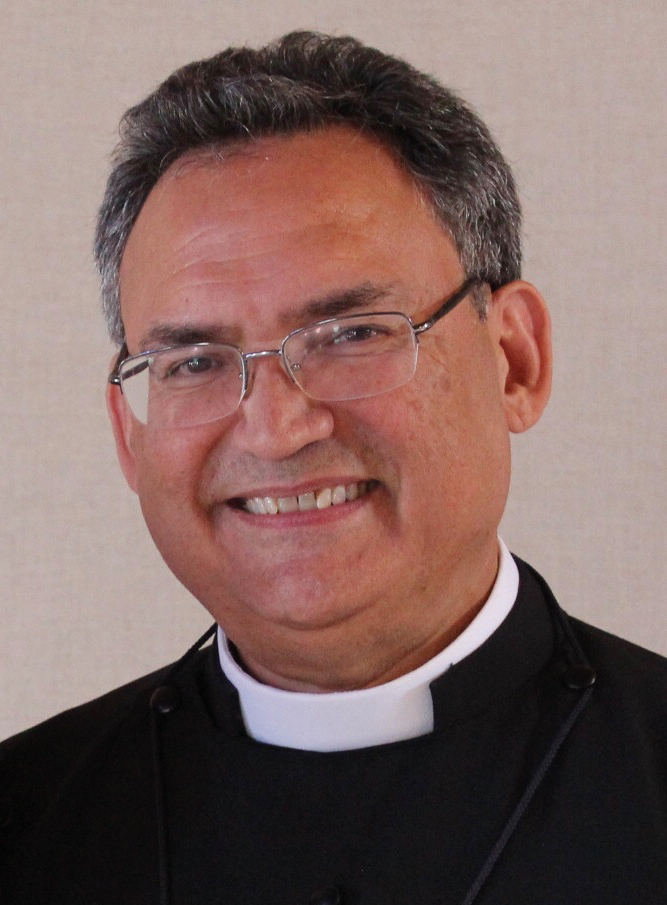Disciple: Thoughts on Stewardship
Though often thought of in terms of campaigns and pledges, stewardship is about more than raising money. It is about how we give of ourselves and how we—as congregations—give to our surrounding communities. When we give or make a pledge to our church, we are reaffirming our commitment to love others as we love ourselves.
The pandemic has given us a chance to reach deeper, not just in our faith, but in the ways we connect and give to each other. Innovative thinking has seen churches move from seasonal stewardship campaigns to year-round giving. Technology and online worship expanded opportunities and saw the implementation of online giving options, reminding us we don’t have to be in a physical space to make an offering.
The congregational development and support team of the Diocese of North Carolina has walked side-by-side with churches throughout the pandemic, sharing and guiding as congregations navigated new paths. And while the pandemic certainly brought new ideas and approaches to light, it also reinforced that some practices have stood the test of time for a reason, especially when it comes to stewardship. Follow up with individual team members.
STEWARDSHIP IN A TIME OF PANDEMIC
By the Rev. Canon Earnest Graham, regional canon

It’s all about relationships. It always was. The difference now is the way the pandemic disrupted the normal ways we relate to each other. So many of the connections we make in church happen as we work side by side in the sacristy, a food kitchen, on a project or in the in-between moments. The pandemic denied us this, and people have experienced isolation and loneliness. Many still do. How can our church find safe and joyful ways to come together? Consider leading with pastoral care. How do we reach out to those who are still homebound? The care and nurture of our relationships is essential to the health of our churches and the well-being of our members and community.
Transparency: It’s not just for finances. We usually think of transparency in terms of money, and that is vital for the health of the church and the confidence people have about the gifts they give. In this season, there is another type of transparency we need to practice. Being together online or in a limited way, we do not all see the ministries of the church. Many churches have managed to continue ministries or start new ones. People have worked overtime behind the scenes to bring worship online or maintain critical outreach ministries. Make this amazing work visible. Share these stories, and show how God enabled you to adapt during this time.Give thanks and celebrate! As a rule, you can never thank people enough for the multitude of ways they share their gifts with the community. While some people have stepped back, experienced church online or pulled away from the life of the church, many people have stepped up, made sacrifices and taken risks. Give thanks whenever and wherever you can for all of these acts of love. Celebrate them in the life of the church. Rejoice in the goodness that shines in the darkness of this time.
Share the vision, or share the visioning. We do not know what the coming year(s) will bring. We are learning to live into new ways of being church. You may have a clear vision of what the church will do next. If so, share it. If not, use this opportunity of unknowing to come together, listen to one another, and shape a new vision for the short or long term. Communicating this vision will help people know how to participate in the life of the church. You do not have to have all the answers. This is unchartered territory for all of us. But the Holy Spirit remains with us and is here to guide us through this time. We may discover that the blessing of this time is found in the new ways we come together.
THE POWER OF STORYTELLING
By the Rev. Kathy Walker, missioner for Black ministries

One of the most powerful tools in your stewardship toolbox is the gift of storytelling. Making space for parishioners to tell others about their relationship with God, the community and their treasure can be a compelling way to encourage folks to participate in any giving campaign. Those emotional connections speak beyond the black-and-white nuts-and-bolts and talk directly to the hearts of those being encouraged to pledge.
In many cultures, storytelling is a rich and time-honored ritual. At the onset of a stewardship campaign and throughout, allowing parishioners to speak to the audience about why they support a specific congregation can have a pretty dramatic impact on the giving of others. Often, people are excited to share their story of how they came to join a particular church—it might have been the welcome they received, the passion someone exhibited while talking about youth programs or adult formation, or the commitment they saw to prioritizing social justice. In other cases, people will speak lovingly of their deep roots and multi-generational participation in a profoundly meaningful community. The relationship is familial and familiar. Many roads lead to church, and, therefore, the more people share those things they are passionate about, the more others want to become involved.
Make sure to keep God at the center of any stewardship storytelling campaign. It is very important for people to clearly connect their time, talent and treasure to God’s work in the kingdom. As humans give careful consideration to their level of giving, there must be a clear understanding of why they are being asked to contribute to the ongoing work of the church. Those sacred and personal stories impact listeners in ways that are much more exciting than when money is being requested with technical charts and budget presentations. Sharing inspirational stories in heartfelt ways may be just the tool needed in a post-pandemic era.
A SPIRIT OF GENEROSITY: PLANNED GIVING AND MAJOR GIFTS
By the Rev. Canon David Sellery, canon for congregational mission

When we talk about planned giving, major gifts and the role of a capital campaign in the context of Christian stewardship, it is important to remember these gifts are not just about money and pledges. They are about relationships and honoring the dignity of the donors’ gifts of time and talent.
- Establish your acceptance policies. Real estate can be complicated and sometimes costs more than it is worth. Art can be expensive to store, insure, transport and sell.
- Many types of gifts might take “planning” for tax benefits. For some you will need professional assistance, such as:
- Current gifts: stock, real estate and art
- Deferred gifts: charitable gift annuities, trusts and life insurance can provide income to the donor
- Bequests: leaving money to a charity in a will.
- Set a table of giving opportunities encouraging bequests that will support your goals.
Our stewardship is inseparable from our faith and an affirmation we are a full member of a wider community. The invitation stewardship proclaims is to see God’s will be done, that we will gladly share not only from our prosperity in good times but from our necessity in troubled times. Gifts made through planned giving are to advance the mission of the church, and every bequest is a statement of faith and thanksgiving.
TIME + TALENT = TREASURE
By the Rev. Daniel Robayo, missioner for Latino/Hispanic ministries

The English words of the second verse of Fr. Cesáreo Gabarain’s very popular hymn Pescador (also known as “Tú has venido a la orilla / You have come to the shore”) are: “You know full well my possessions. /Neither treasure nor weapons for conquest, / just these fishnets and will for working.” And the third says, “You need my hands, my exhaustion, / working love for the rest of the weary, / a love that’s willing to go on loving.” [English translation by Madeleine F. Marshall, as found in El Himnario].
These words capture much of the spirit that animates stewardship in our Latino/Hispanic communities. Stewardship is not primarily about giving money but about giving time and talent, especially if people have limited financial resources. I frequently have been offered work done for the church or the community. “Padre, does the church need anything painted (or fixed or cleaned, etc.)?” My fishnets and my will to work indeed! There is a beautiful Noah’s Ark in the playground of Iglesia El Buen Pastor, Durham. It was built by a parishioner who is also a carpenter.
Great generosity with money takes place when needs arise. I have seen thousands of dollars raised in an evening to help a grieving family bury a loved one, or a family in COVID-19 quarantine receive money for expenses and having home-cooked meals brought to their door. Families customarily give generously to the church every time they celebrate an occasion: baptisms, first communions, confirmations, quinceañeras or weddings. Treasure is not given abstractly but concretely.
Perhaps a lesson here is that stewardship grows when people know that their giving is meaningful, useful and addresses specific needs of the community.
RESOURCES ABOUND
By the Rev. Canon Dr. Sally French, canon for east regional ministry and innovative collaboration

When it comes time to focus on stewardship, you don’t need to start from scratch. There are wonderful resources available that provide everything from guidelines and principles to all-inclusive packages. As you examine your options to engage your church in new or renewed stewardship, consider the following resources.
Your history: Your congregation has a history of generous giving and support, and one of the best resources for future efforts is the work you’ve done before. What have you done in past years? What worked well, and what did not? New programs and initiatives are wonderful, but they are most effective when they take into account the congregation’s history and current practices of stewardship.
ECF360: ECF360.org is offered by the Episcopal Church Foundation and provides low-cost resources ($10/month, $99/year) to assist with stewardship for congregations of all sizes. In addition to comprehensive and high-quality materials for annual pledge campaigns, ECF360 also offers resources for capital campaigns and planned giving initiatives. ECF360 includes an evaluation of the strengths and weaknesses of each approach to help you decide what may be best for your congregation. Try a one-month subscription to explore all it has to offer.
Project Resource: ProjectResource.org provides resources and support for a variety of stewardship initiatives. While Project Resource does provide a number of useful materials, samples and downloadable resources for free, its real strength is in the trainings and resources intended to promote year-round stewardship, with a focus on materials to enhance a congregation’s work. This program requires a significant commitment from congregational leaders to be effective.
These are just a few resources to help you get started or reinvigorate your stewardship practices. Other options include the Episcopal Network for Stewardship (TENS.org) and a multitude of books available through Church Publishing. The possibilities are endless; if you have any questions or would like to explore this further, please contact the congregational development and support team.
